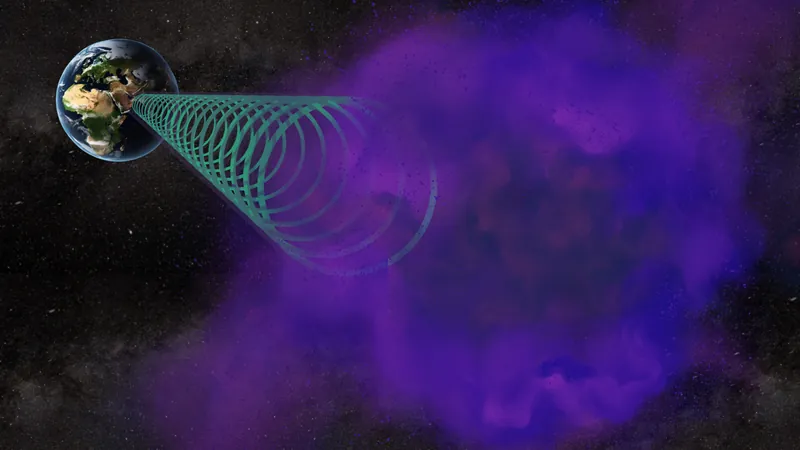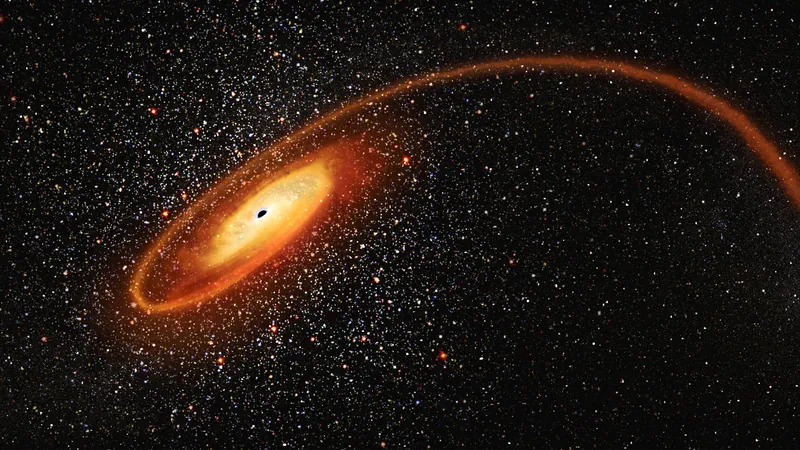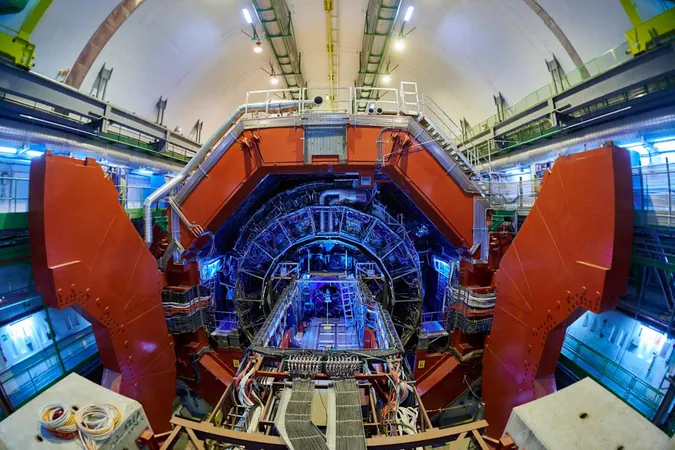
Tune in to the Secrets of the Universe: A 'Cosmic Car Radio' for Dark Matter Discovery in 15 Years!
2025-04-16
Author: Olivia
The enigma of dark matter has puzzled scientists for decades, but groundbreaking advancements could lead to its resolution in just 15 years. Enter the world of the "axion quasiparticle," a game-changing concept that could function like a cosmic car radio, enabling researchers to tune into the elusive frequency of axions—key contenders in the search for dark matter.
Unlocking the Silence of the Cosmos
Imagine a detector so precise, it could be the key to unraveling the mysteries of dark matter, which constitutes about 85% of the universe but remains invisible to us. This innovative device aims to amplify signals when tuned to the correct frequency of axions, the hypothetical particles that scientists believe may hold the key to understanding dark matter.
David "Doddy" Marsh from King's College London explains, "To detect the axion, we need to find its unique frequency. When we tune in, signals resonate more powerfully, resembling the search for a perfect radio station while on a road trip." This promising technology could soon make waves in the scientific community.
The Quest Beyond the Standard Model
Despite making significant strides with discoveries like the Higgs Boson in 2012, researchers have turned their attention to particles beyond the Standard Model. Axions have emerged as prime candidates in the race to understand dark matter due to their incredibly weak interaction with matter and light.
Marsh recalls, "Axions have been under consideration since the 1980s, but earlier technologies couldn't detect their faint signals. The Axion Dark Matter Experiment (ADMX) finally reached the sensitivity needed to explore axions, marking a shift in momentum for this scientific quest."
Harnessing Quasiparticles for Detection
The team’s cutting-edge proposal hinges on utilizing a unique material called manganese bismuth telluride to create axion quasiparticles. These quasiparticles, behaving as though they are single particles, will supposedly transmit frequencies into space that may align with actual axions.
Marsh elaborates, "When our detector reaches the right frequency, the axion quasiparticles emit tiny light signals that could confirm their existence. We plan to explore a high-frequency range, looking for what may be the best chance to find axions."
A Future Full of Discovery
Marsh predicts that a prototype of this cutting-edge dark matter detector could be operational by 2030, kicking off a new decade of exploration. Full-scale experiments might require significant funding, but the potential rewards—unraveling the nature of dark matter—are monumental.
"While we could get lucky and discover dark matter earlier, estimating 15 years allows us to prepare for every possibility," he states.
Beyond Detection: The Mysteries Await
Even if the detector successfully identifies an axion, profound questions will remain. Researchers will need to determine if dark matter comprises only axions or if multiple types exist, similar to the three known types of neutrinos. Furthermore, axions could provide insights into other cosmic enigmas.
Marsh affirms, "Detecting various types of axions may help us understand phenomena like changing dark energy or cosmic inflation. But it’s crucial to remember, there’s not just one axion that explains everything. Different problems might require different axions or frequencies to solve!"
The Road Ahead
The journey to decode dark matter with axion-quasiparticle detectors is filled with uncertainties, but Marsh is optimistic. He acknowledges that should these experiments fall short of detecting enough axions, the quest will continue at all frequencies to unveil the universe’s darkest secrets.
In a world where each discovery brings us closer to understanding the cosmos, this research heralds a thrilling era for physicists everywhere. Keep an eye out, as the answers to our universe’s deepest mysteries could be just a frequency away!









 Brasil (PT)
Brasil (PT)
 Canada (EN)
Canada (EN)
 Chile (ES)
Chile (ES)
 Česko (CS)
Česko (CS)
 대한민국 (KO)
대한민국 (KO)
 España (ES)
España (ES)
 France (FR)
France (FR)
 Hong Kong (EN)
Hong Kong (EN)
 Italia (IT)
Italia (IT)
 日本 (JA)
日本 (JA)
 Magyarország (HU)
Magyarország (HU)
 Norge (NO)
Norge (NO)
 Polska (PL)
Polska (PL)
 Schweiz (DE)
Schweiz (DE)
 Singapore (EN)
Singapore (EN)
 Sverige (SV)
Sverige (SV)
 Suomi (FI)
Suomi (FI)
 Türkiye (TR)
Türkiye (TR)
 الإمارات العربية المتحدة (AR)
الإمارات العربية المتحدة (AR)